Easter Island, renowned for its iconic moai statues crafted by the Rapa Nui people from the volcanic rock of Rano Raraku crater, also reveals an equally fascinating tale at Orongo. This ceremonial village is located on the southern slopes of another volcano, Rano Kau.
Perched on the edge of the crater and above steep cliffs, the stone village provided members of the Birdman cult (tangata manu) with a breathtaking 360-degree view of the crater lake and the vast Pacific Ocean. The three small islets visible from Orongo were central to one of the cult’s most significant rituals.
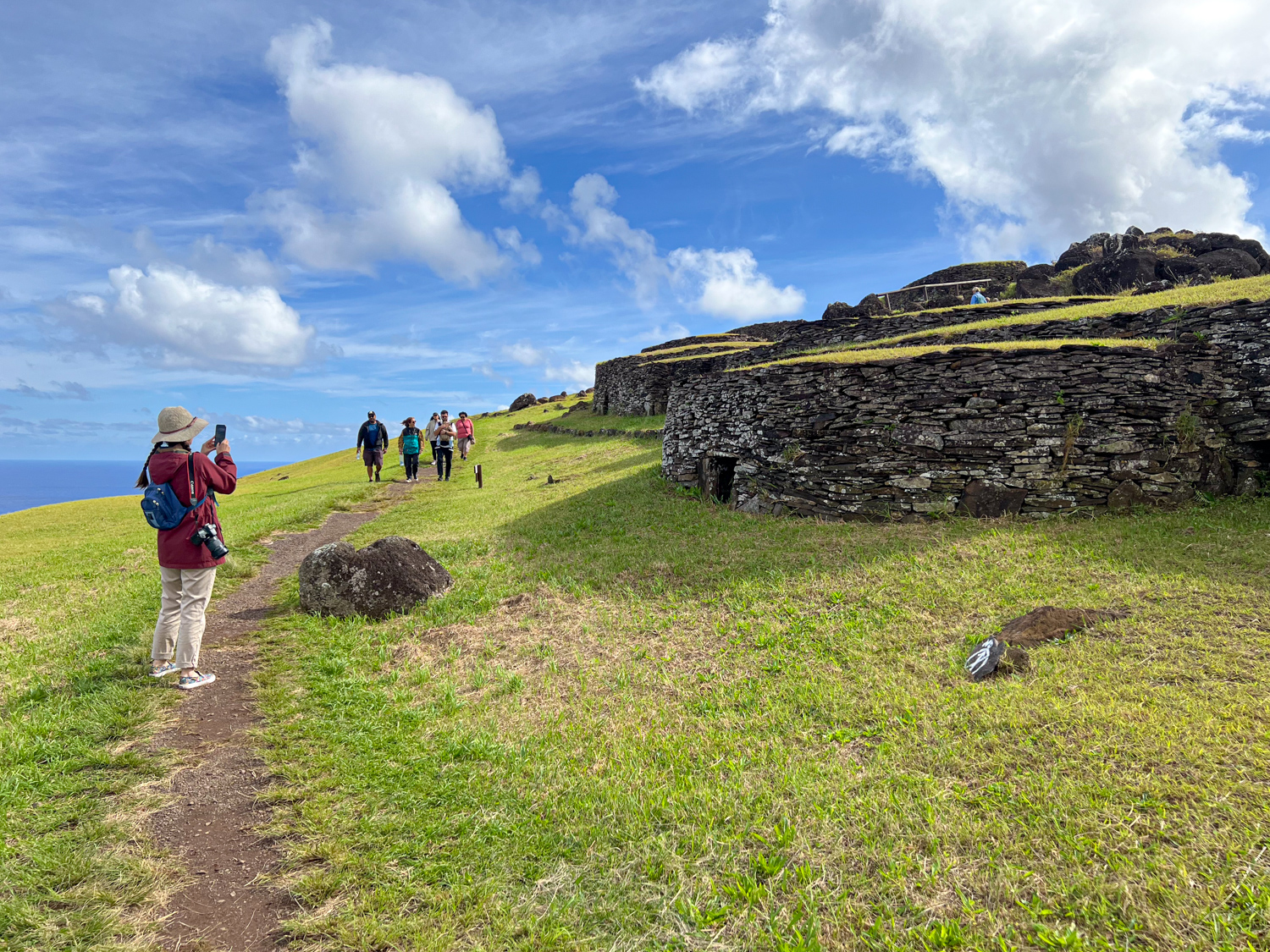
Orongo village is situated in Rapa Nui National Park, a UNESCO World Heritage Site, so visitors are required to purchase and carry a park pass for entry. A licensed guide is mandatory, and just like Rano Raraku, visitors can only tour Orongo once during their stay on Easter Island.
In this post, I’ll share our journey visiting Rano Kau and Orongo as part of a half-day guided tour, during which we learned about Orongo’s origins, the Birdman cult, and their perilous competitions to elect new leaders, as well as the reasons behind the cult’s decline.
Rano Kau Volcano
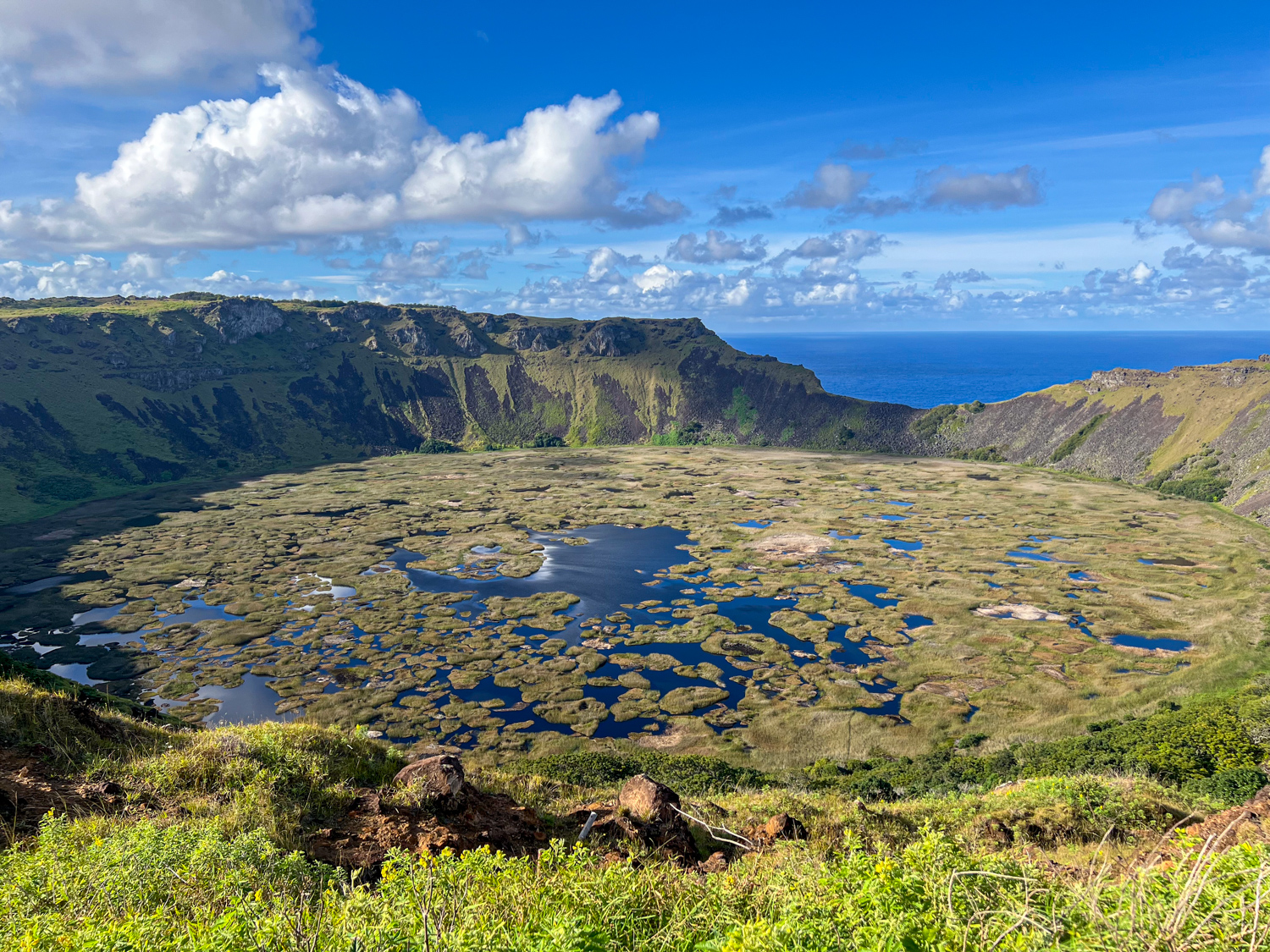

Let’s start with the Rano Kau Volcano, which rises 1,063 feet along the southern coast of Easter Island. The youngest rock formations at this extinct volcano date back approximately 150,000 to 210,000 years.
Visitors can enjoy views of the freshwater lake and marsh inside the caldera while taking stunning photographs from a lookout point on the road leading to Orongo’s visitor center. At the southern edge of the volcano, the slow erosion of the crater’s walls by the Pacific Ocean is evident.
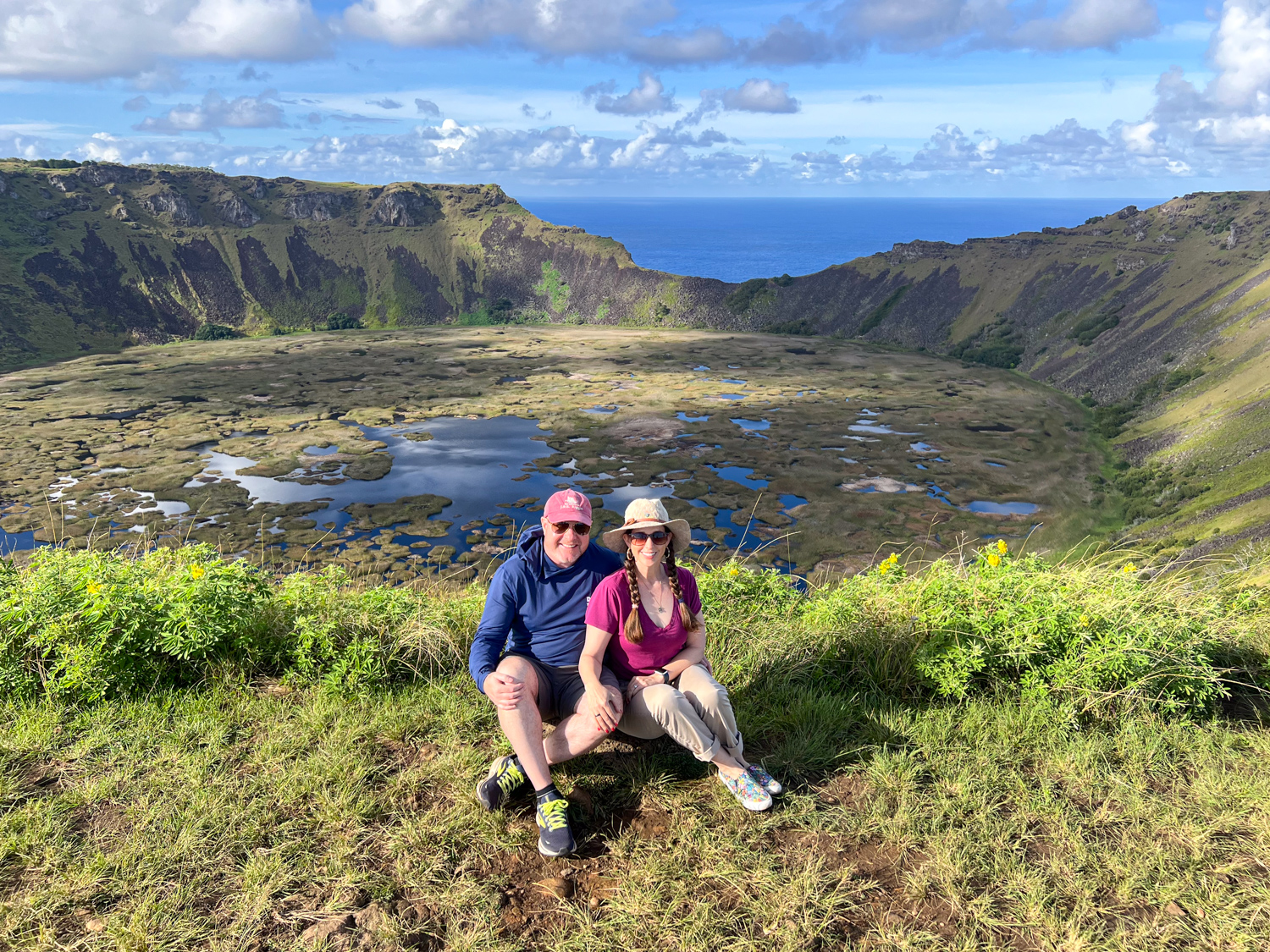

From the lookout point, you can spot the village of Orongo, where the horizon meets the crater’s rim. The slopes inside Rano Kau are quite steep, ranging from 45 to 65 degrees.
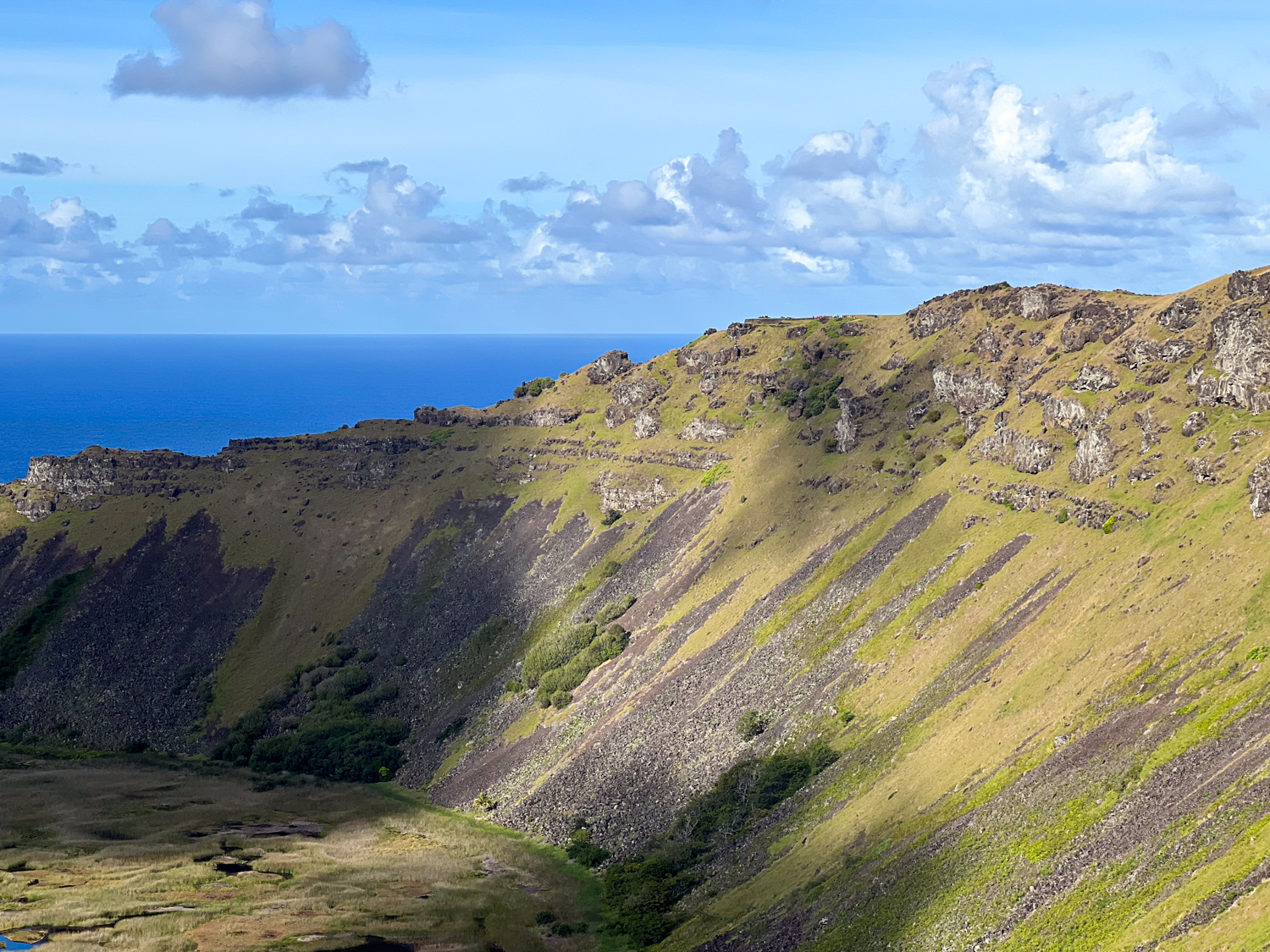

The crater is rich in obsidian, a tough black volcanic glass that the Rapa Nui people utilized to carve the magnificent moai statues at Rano Raraku Volcano, located at the island’s northeastern end.
Along with the scenic crater, the viewpoint at Rano Kau also provides spectacular vistas to the north, showcasing Mataveri International Airport, the town of Hanga Roa, and Mount Terevaka, the highest volcano on Easter Island, standing at 1,664 feet.
You don’t need a guide to explore the crater. If you have a rental car on Easter Island, you can drive up there. Other options include biking or hiking. During our small group tour, we spent about 25 minutes at this stunning location before proceeding to Orongo, located at the southwestern edge of the crater.
Orongo Ceremonial Village
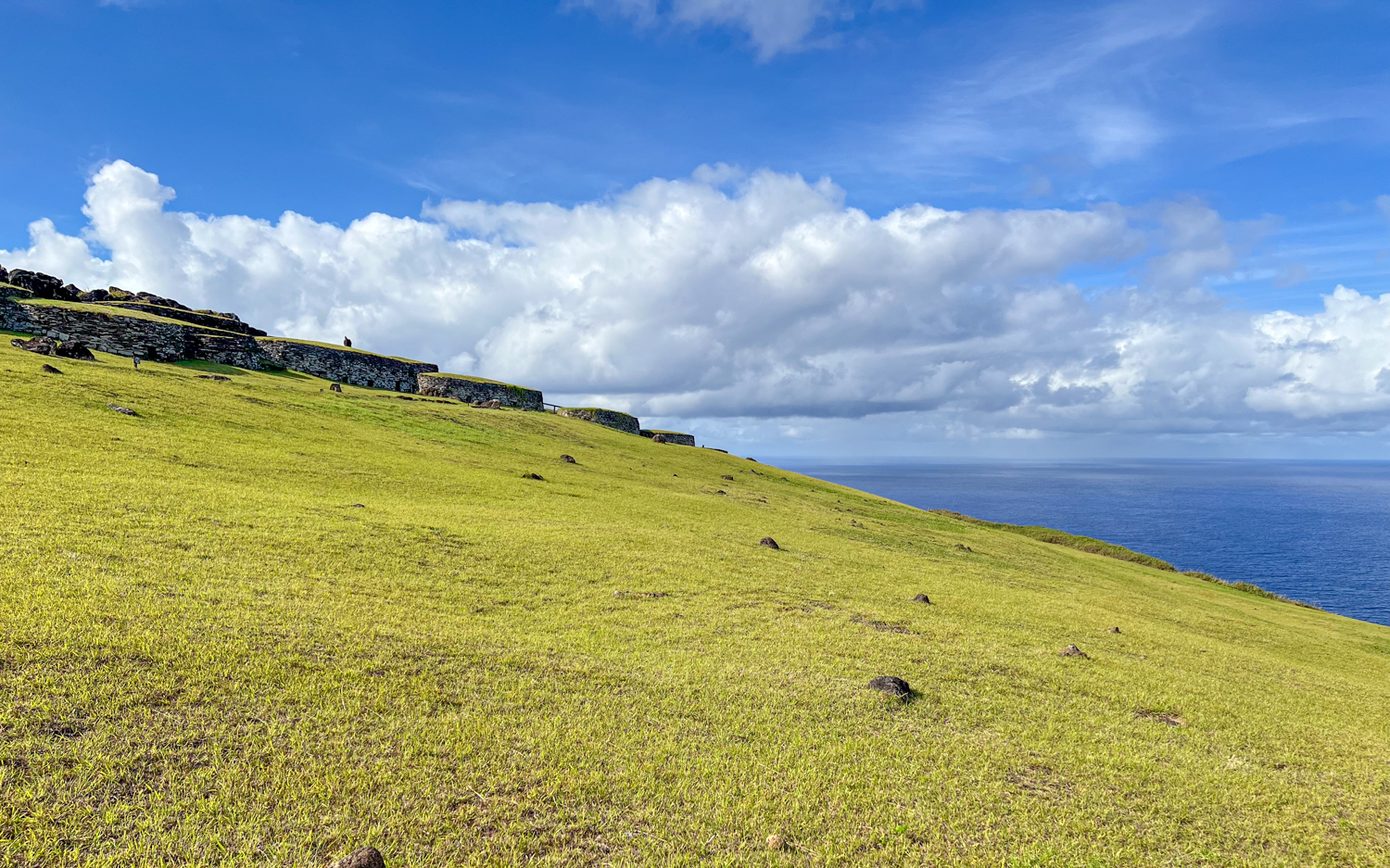

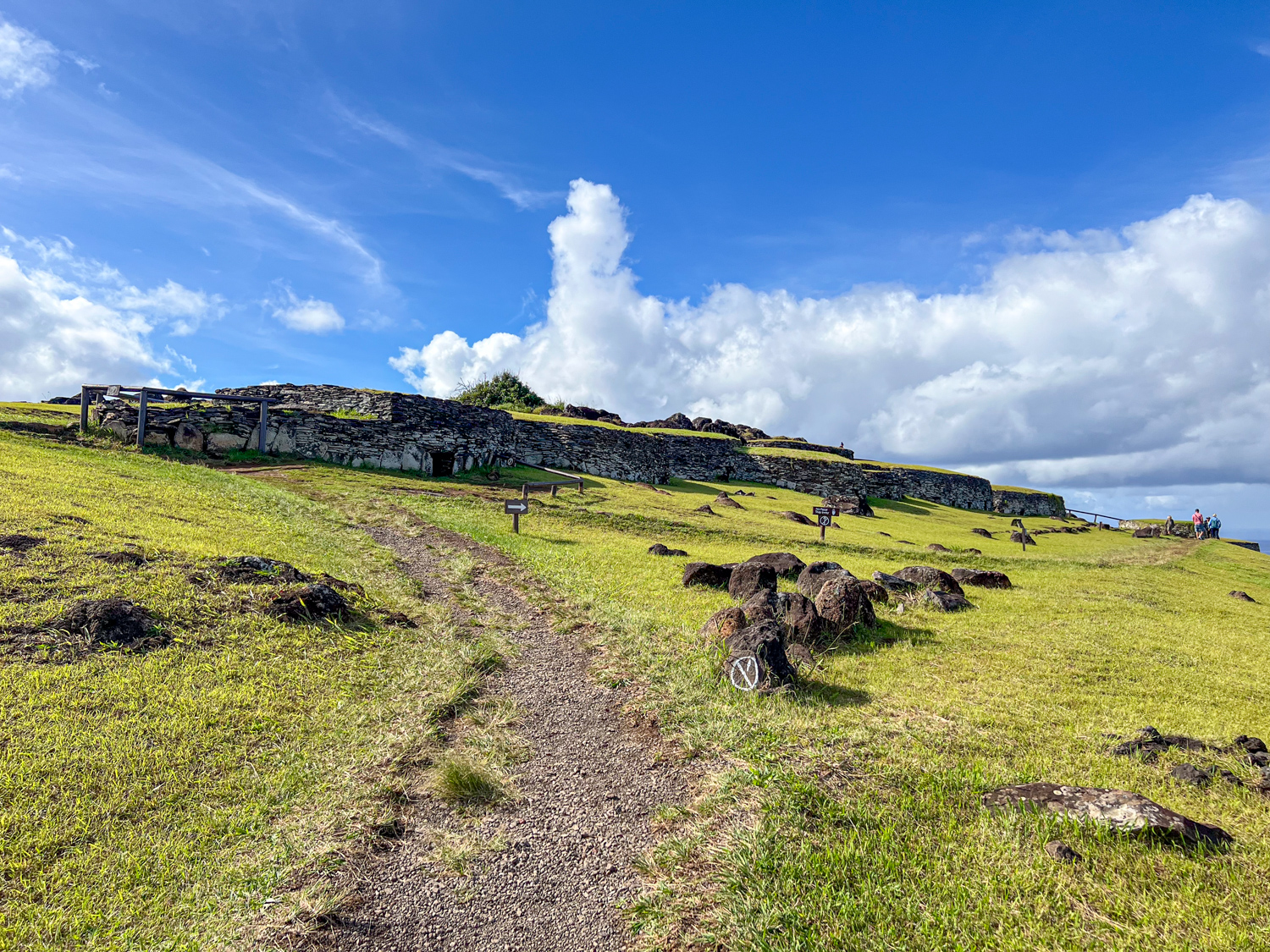

Following the end of the moai carving era, the Rapa Nui built and occupied the village of Orongo from the 18th century until the mid-19th century.
This village consists of fifty-three elliptical stone houses, constructed on the slopes of Rano Kau above cliffs that rise over a thousand feet. Unlike the soft volcanic rock used for creating the moai, thicker, flatter stones formed the buildings here.
The choice of materials and low-profile architecture not only made the structures robust but also sheltered them from the strong winds present on the crater’s exposed slopes. Sod roofs naturally insulated the interiors, keeping them cool, while the absence of windows further regulated the temperature.
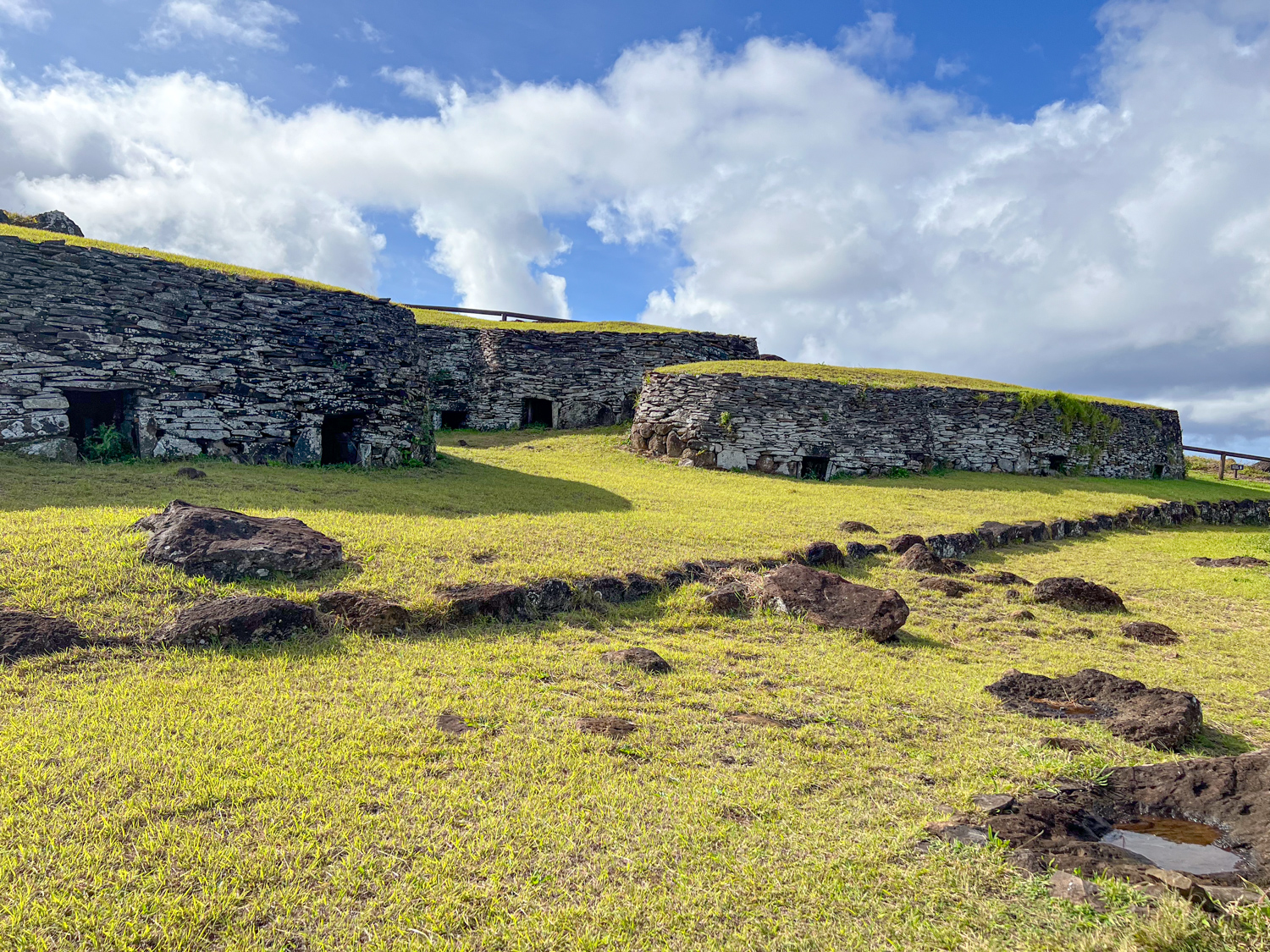

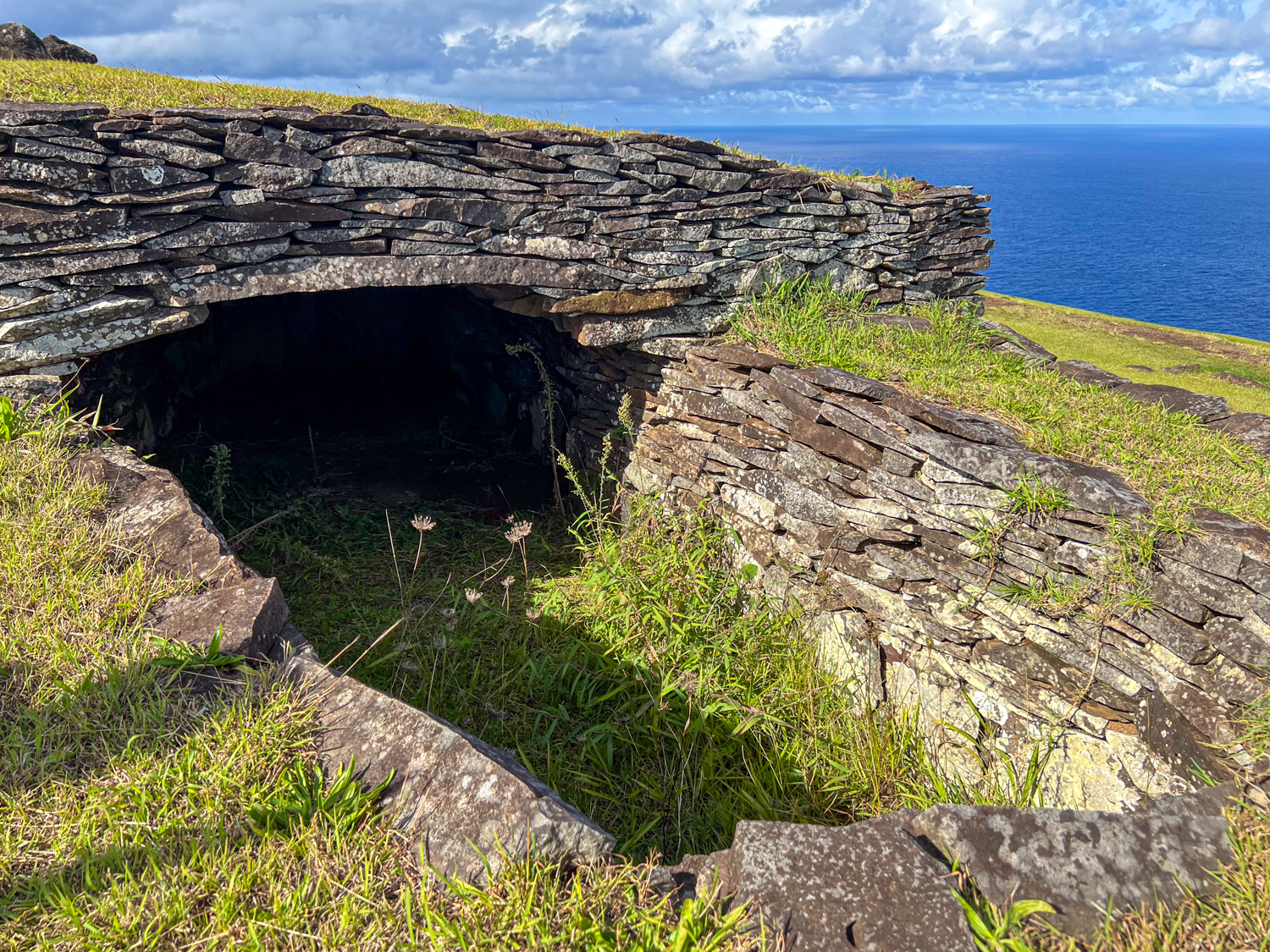

The Birdman Cult
Orongo served as the ceremonial hub for Easter Island’s Birdman cult, which emerged in the 16th century, replacing the previous tradition of moai construction as a central religious and political practice.
This cult was rooted in the worship of Makemake, the god of fertility and creation. Its core event was an annual competition to identify the new “Tangata Manu” or Birdman.
During this competition, tribal representatives raced to obtain the first egg laid by the sooty tern (manutara) on Motu Nui, the largest of three islets located to the south of Easter Island.
Motu Nui may appear small, but it is the summit of a volcano that rises about 6,500 feet from the ocean floor. The sooty tern is a migratory seabird that returns to land to breed.
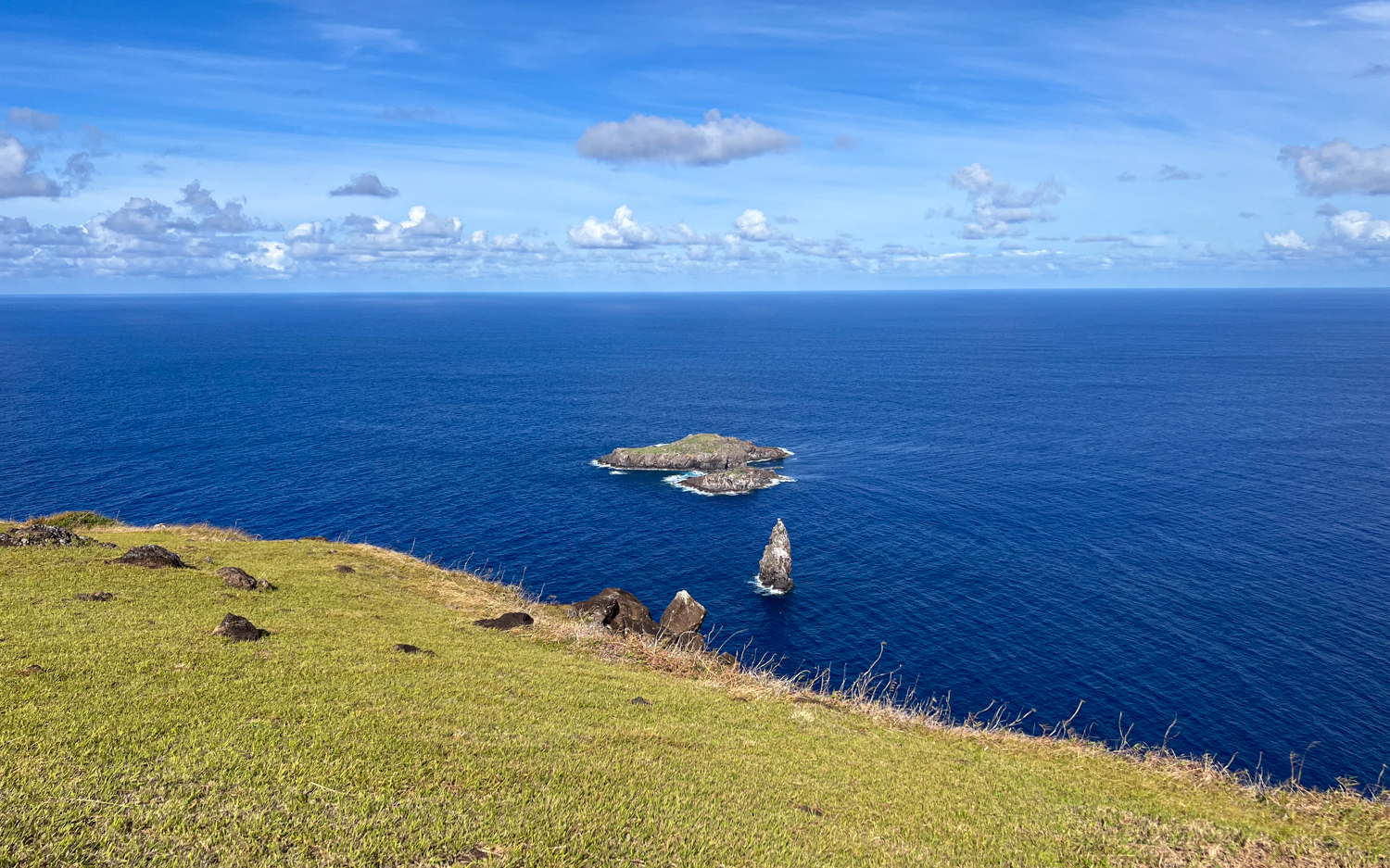

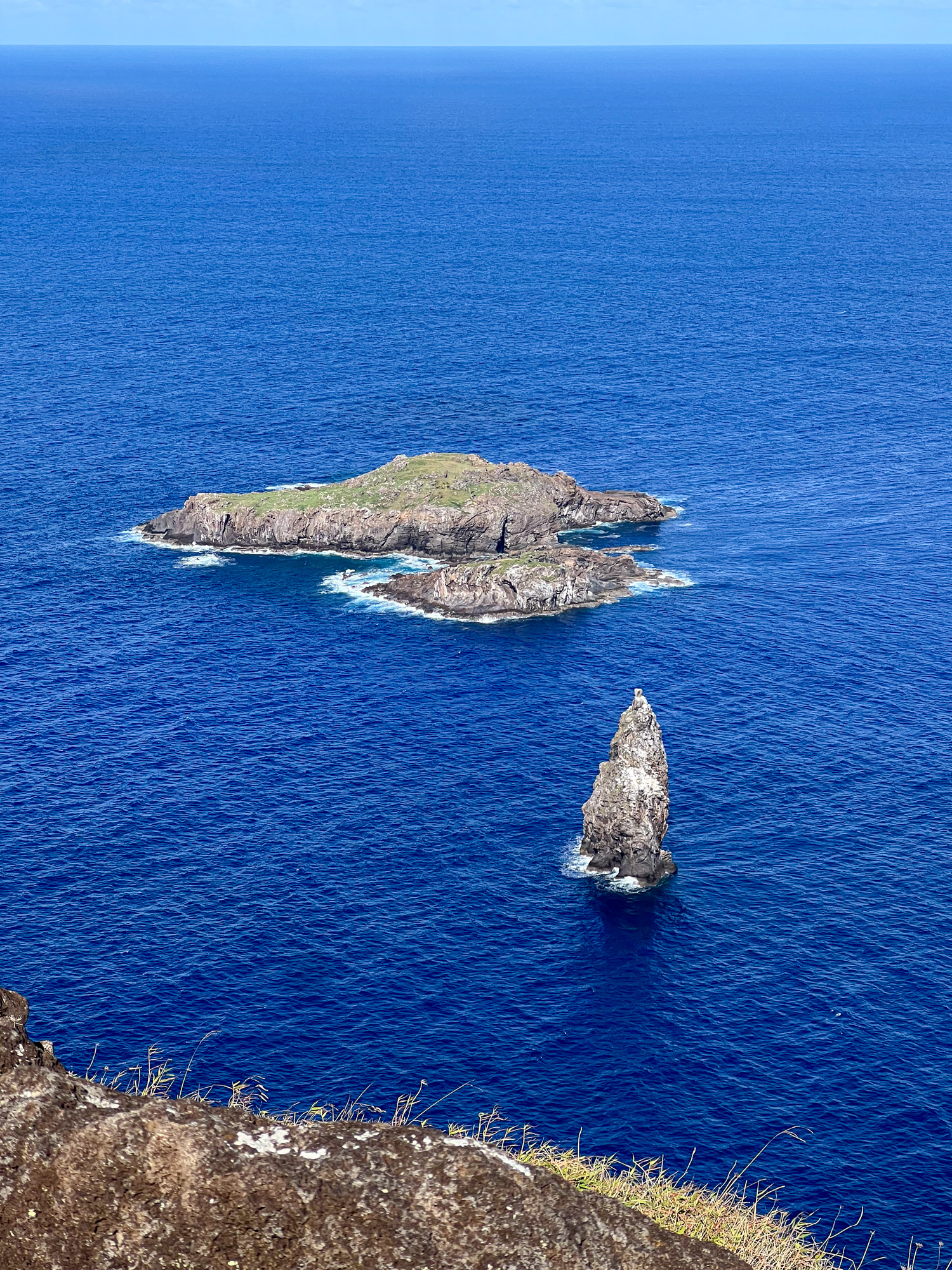

The Birdman competition was perilous, posing life-and-death stakes. Several participants tragically fell to their deaths while scrambling down the steep cliffs to the ocean. Once in the water, they faced the dangers of shark attacks or exhaustion leading to drowning.
For a better understanding of this grueling race, watch the Kevin Costner-produced film Rapa Nui (available on Amazon Prime).
The winner who successfully returned with the egg (by swimming back and climbing the cliffs) gained immense power and prestige for their tribe, while simultaneously holding spiritual authority for the coming year.
The Birdman cult was deeply rooted in beliefs surrounding divine intervention and the cyclical nature of life, symbolized by the birds and their eggs. Its rituals also highlighted the social hierarchy, with tribal leaders competing for control of resources and influence.
Numerous petroglyphs depicting the Birdman cult’s symbolism were carved at Orongo, though regrettably, many of these invaluable artifacts were taken during archaeological surveys.
The Decline of Orongo
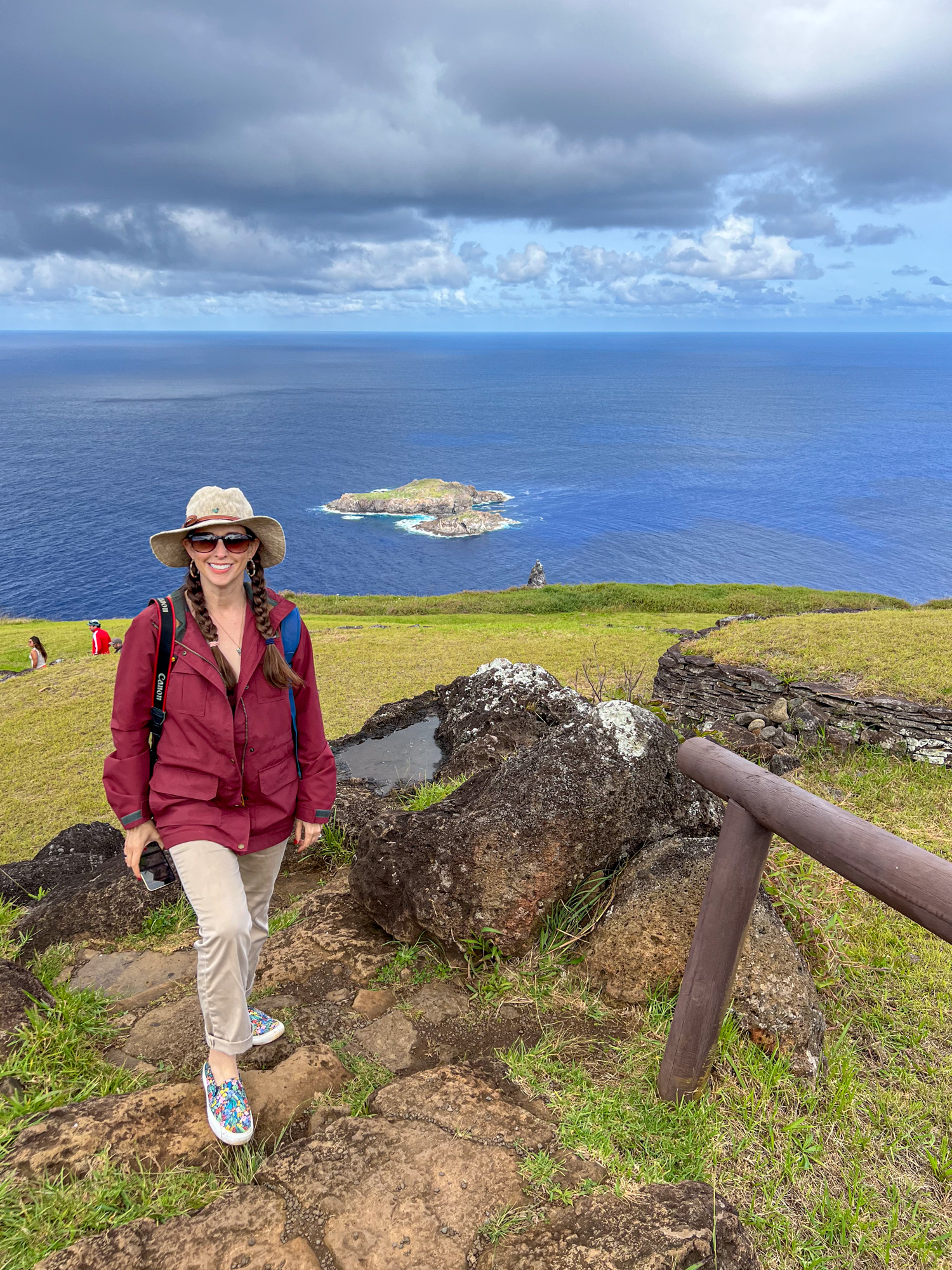

By the mid-1800s, European contact led to the introduction of diseases that decimated the indigenous population of Easter Island. In addition, Peruvians began raiding the island to enslave Rapa Nui people and transport them back to Peru.
Only about 100 Rapa Nui are believed to have survived this crisis, and many who endured were converted to Christianity. Consequently, the ceremonial village of Orongo fell into neglect. The last documented Birdman competition likely took place in 1866 or 1867.
In 1868, the British crew of the HMS Topaze took the Hoa Hakananai’a moai—a 7-foot-tall, 4.2-ton statue—from Orongo to England. This moai is intricately carved with motifs of the Birdman and the sooty tern. Today, it is housed in the British Museum, despite a formal plea from the Governor of Easter Island in 2018 for its return.
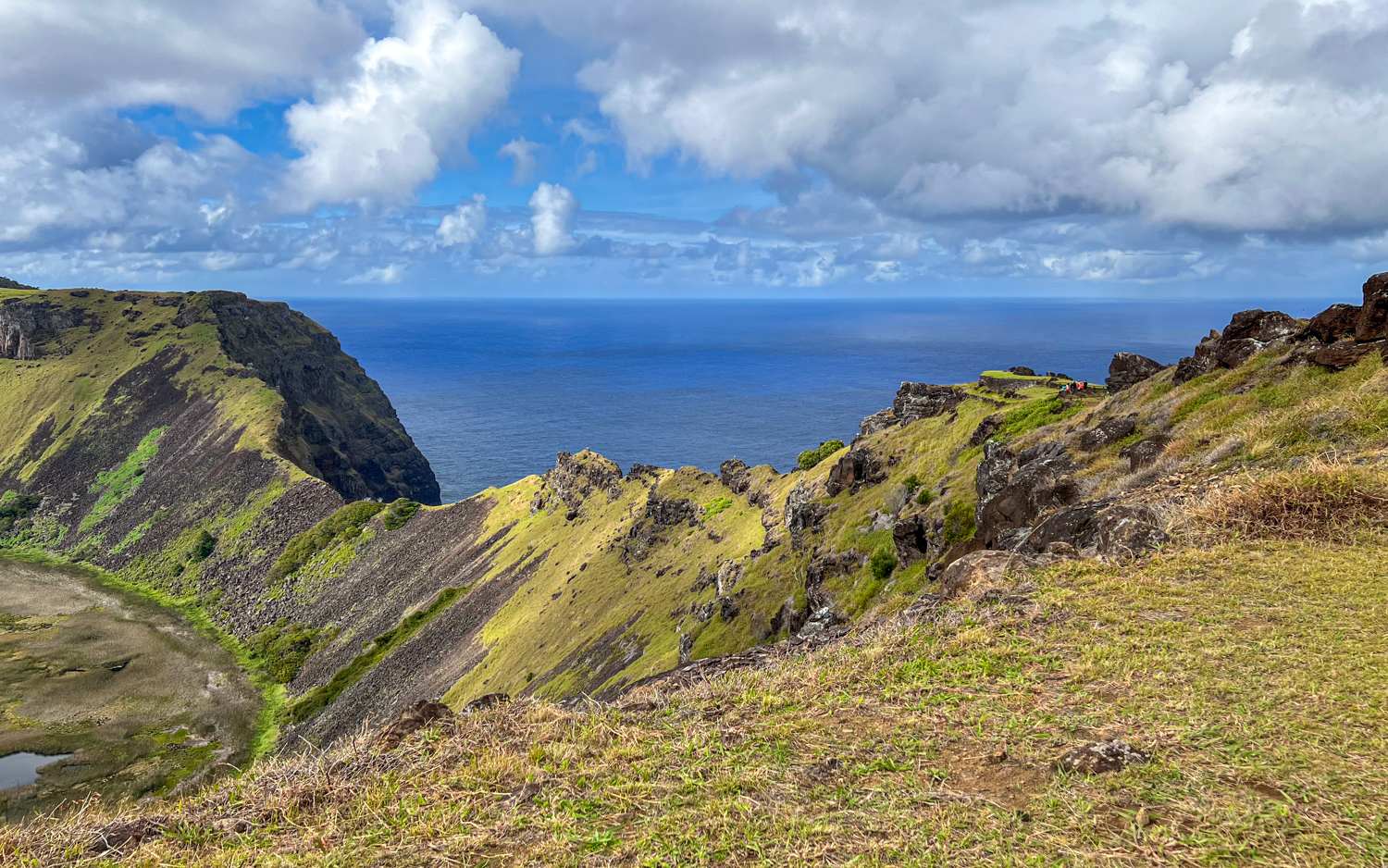

The cultural and architectural importance of Orongo makes it an essential destination for those visiting Easter Island. Situated atop the dramatic Rano Kau volcano, it offers not only breathtaking views but also an opportunity to gain insight into the history of the Birdman cult and the thrilling competitions held there.
Dave is the Founder and Editor in Chief of Go Backpacking and Feastio. He’s been to 66 countries and lived in Colombia and Peru. Read the full story of how he became a travel blogger.
Planning a trip? Go Backpacking recommends:



